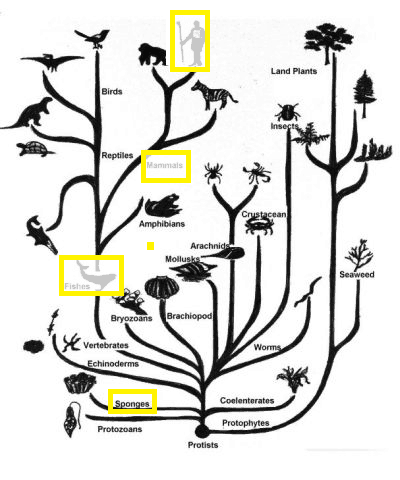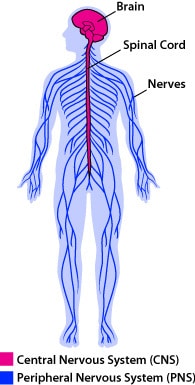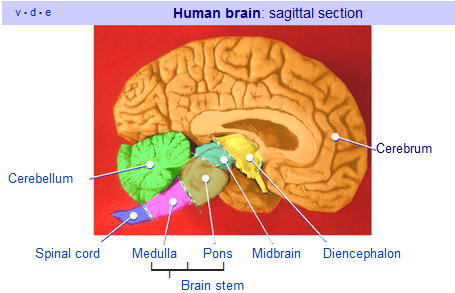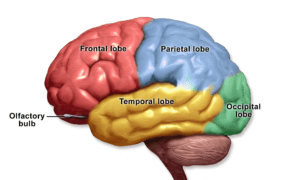Neurons (many billions with trillions of interconnections) carry and process electrical signals, which are the basis of all cognition including rational thought. Neurons are the basic cells of the nervous system of both invertebrates and vertebrates, from sponges forward in the evolutionary scheme. Later, the discussion will take up the increase in brain complexity as found in nature’s organisms, to systematically explain the processing of the human brain.
In Figure 6.1, the Tree of Life, all living organisms above the sponge branch rely on neurons to respond to the world. The sponge branch, second from the bottom on the left, has yet to develop neurons.. If you continue up the stalk to where fish are, you’ll see a bit higher the mammalian branch with humans at the terminal leaf. In Brain through the Ages the capabilities of ancestor species will permit a step-by-step analysis leading up to our mental complexity.
Caveat
The human body, the nervous system, and the brain are immensely complex systems. In Mental Construction, the discussion is restricted to support the main theme—the role of neurons in making associations the prime force in how and what we think (logic is important in many conscious thoughts, but only in higher thoughts). Many important and interesting facts and discoveries in neuroscience will not be covered to retain the focus of the discussion.
Human Nervous System
All the operative elements supporting the human nervous system (Figure 6.2) are neurons; however, the magnitude of interconnections between the neurons are not the same throughout the system. They are lowest in the periphery, increase in the spinal cord, and are highest in the cortical lobes of the brain. The relative connectivity mirrors the difference between passing sensory signals, coordinating data, and processing information.
Peripheral
The peripheral nervous system fulfills three functional tasks:
- Relay sense data to brain. It’s useful to consider two sensory types–direct experience and remote sensing. Direct experience senses are touch, taste, and proprioceptor (body orientation). The remote senses are sight, hearing, and smell.
- Perform actions sent from the brain’s neural signals. These actions have two distinct classes—muscle movement and speech.
- Homeostasis. The third branch monitors the body’s internal organs and maintains levels of body temperature, concentrations of sodium, calcium, potassium, glucose—that our bodies require to operate well. The brain adjusts the physiological levels with action instructions that control our heart rate, breathing, digestion, and the like. This cycling of information and action is performed without any conscious control, as can be inferred from its biological name—the autonomic nervous system.
Brain
The brain is composed of approximately 100 billion neurons, divided into significant structures. Figure 6.3 shows lower, older structures than the cortical lobes, but these structures bear importantly on our behavior and our cognition.
Brainstem
Although they comprise a small portion of the brain, they handle 90+% of incoming bodily sensory information, without the data traveling any higher in the brain. Only 30 to 100 nerve impulses out of 100 million per second need to be passed from the brainstem into the midbrain and then to the cerebrum.
Homeostasis is mainly controlled in the medulla and the pons—the brainstem. This function, to maintain certain biological levels, provides the basement activity level of most organisms. Presented with an environment, they want to consume nutrients or excrete toxins. No further motivations are required. Avoiding predators or danger is not a part of homeostatic behavior.
Brainstems exist in fish and upward in the Tree of life (Figure 6.1).
Cerebellum
The cerebellum is known to provide balance and ensure smooth operation of our body—that is, once the higher cognitive centers in the prefrontal cortex had decided on a physical action, the cerebellum ensures that it is smoothly executed. It is a huge collection of neurons, 50 billion neurons wired together in a manner quite distinct from that of the cortex.
Cerebellums started with vertebrates, the stem leading up to fishes in the Tree of life. The cerebellum is essential for smooth movement, a crucial behavioral characteristic.
Limbic System
In the Figure 6.3, the midbrain contains the limbic system, although all important features are not shown for this overview. The limbic system is incredibly important to human thinking and behavior. The role of the limbic system will be highlighted in the discussion on concept elevation—the manner in which current experience is blended with past experience to create one’s inner view of the world.
The amygdala has been identified as the repository of flight-or-fight response. It is a short step from the flight-or-fight response to realizing it is a source input for our emotional states, which provide us with goals.
The hypothalamus is crucial to memory formation, which in turn is essential to relating current to past situations, so that the earlier outcomes can guide our reactions now.
Cerebrum
The cerebrum is the cerebral cortex and some subcortical structures. At this time, let’s just address the cortex, the most recently evolved layer of the brain. It provides immense neurological power for our cogitation. The cerebrum is estimated to contain 15 to 20 billion neurons, very uniformly and densely interconnected.
Manfred Spitzer highlights a general function in The Mind in the Machine (p 138),the cortex works as a rule-extraction machine.
We come into this life with a very few bits of a priori operations, such as ability to discern edges, direction of motion, revulsion of certain smells, and so forth. From those humble basics, we learn to distinguish objects, smells, and sounds that fall within our experience. The 3S biological imperatives shape our learning and decision-making as essential substrates upon which the cortex performs its rule extractions.
Cortex
Although uniform neurologically, different parts of the cortex do not compete to handle incoming sensory information. As discussed earlier, clinical observations and laboratory experiments have demonstrated that each lobe handles distinct senses. The cortical lobes (Figure 6.4) first appeared in the earliest mammals. For humans, it’s the frontal lobe which has increased most tremendously.
- Visual data is directed to the rear of the brain, the occipital lobe.
- Auditory data comes from the ears into the adjacent temporal lobe.
- Touch, feel, and bodily sensation come up the spinal cord to be further processed in the parietal lobe, immediately adjacent to the central sulcus, the groove across which lies the frontal lobe.
- Commands for bodily movements are transmitted to the spinal cord from the frontal lobe’s side of the central sulcus.
Within in the lobes, modules (clusters) of neurons inherently abstract information, organize it into categories, and send that onto other neural modules to integrate the category with other pieces of external reality and internal worldview. This occurs multiple times along a neural path that ultimately leads to the executive modules in the prefrontal cortex, where decisions are made.
Next:
Nature-Nurture Genetics and environment. Importance of critical learning periods on lessons learned.
Culture is part of environment, but where did it originate?



